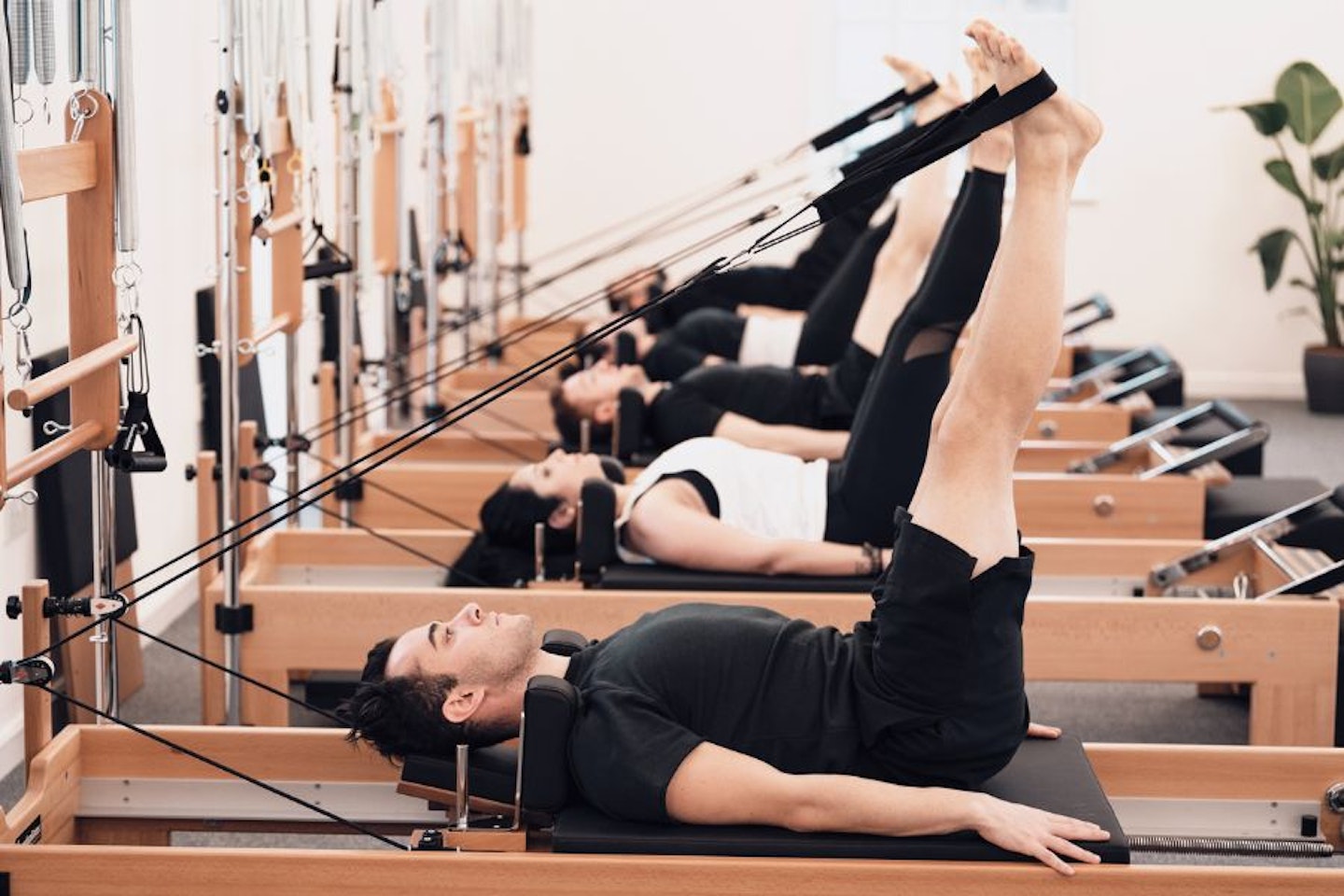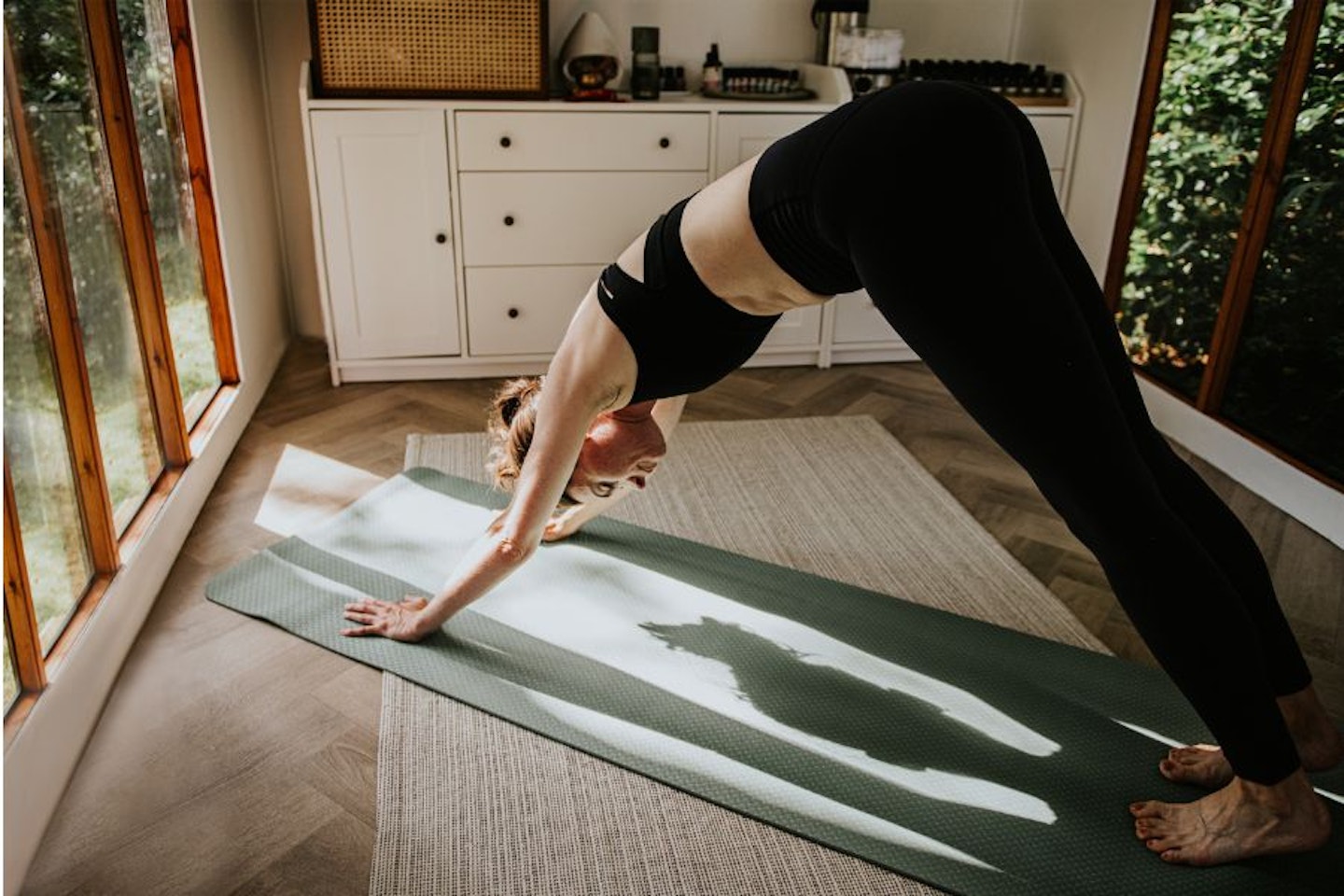The age-old debate of Pilates vs yoga is like entering a zen-infused battlefield where mats are the weapons, and inner peace is the prize. Whether practising in your home gym or a dedicated studio, the journey towards wellbeing often involves one of these two captivating practices that share common ground, yet carve distinct paths to mental and physical harmony.
However, there are some differences to decode between the two. Pilates is all about the core - like a quest for the six-pack. Meanwhile, yoga is the zen master of the fitness game, and it's all about twisting and bending in ways that defy the laws of physics. It's the only fitness class where the downward-facing dog is an actual thing, and you find yourself chanting 'om' without any real idea why.
So, beyond the shared mats and mindful movements, a profound difference lies in philosophies, techniques, and objectives. We're here to unravel the intricacies of Pilates and yoga, guiding you through the two options to help you find a path that aligns best with your fitness goals.
What is Pilates?
Pilates is certainly more than a workout - but what actually is it? Catie Miller, founder of Barre Series, explains:
"Pilates, a popular exercise regimen, has gained immense recognition for its holistic approach to fitness and well-being. Originating in the early 20th century, Pilates has evolved into various forms, emphasising core strength, flexibility, and overall body awareness.
She continues: "It aims to strengthen the core muscles, enhance flexibility, and improve overall body control by focusing on breath control, concentration, centring, precision, and flowing movements. Pilates combines yoga, ballet, and callisthenics to create a unique mind-body workout experience.
"With its diverse forms and undeniable benefits, Pilates stands as a versatile exercise system catering to a broad audience. Whether you are a seasoned athlete, prenatal/postnatal or rehabilitating back from an injury, the principles remain rooted in promoting a healthy mind-body connection. Like any exercise routine, remember it is essential to listen to your body so you build sustainable, lasting change."
Catie isn't wrong about the practice being diverse. It can be completed with little equipment up to a Reformer table.

What are the benefits of Pilates?
The celeb favourite Pilates offers a range of benefits for individuals seeking to enhance their physical wellbeing. Known for its focus on the Powerhouse and overall body awareness, Pilates promotes a balanced and efficient musculature, contributing towards improved posture and reduced risk of injury. Catie gives a few benefits to convince you to finally press the 'book now' button on your Pilates class.
Core strength
"Pilates targets the deep muscles of the core, promoting strength and stability. A strong body contributes to improved posture, reduces the risk of injury, and increases stamina and resilience.
Improved posture
"Pilates emphasises alignment and awareness, which can lead to improved posture. This is particularly beneficial for those who spend long hours sitting at a desk.
Mind-body connection
"Pilates encourages mindfulness, promoting a strong connection between the mind and body. Concentration on movement and breath enhances overall body awareness.
Low-impact exercise
"It's also gentle on the joints, making it suitable for individuals of various fitness levels and ages. It provides an effective workout without placing excessive stress on the body."
What is yoga?
Beyond the physical practice, yoga is all about uniting the mind, body and spirit. Originating in ancient India, yoga is a holistic discipline (like Pilates), that extends beyond the realm of fitness. It invites individuals to explore the key connection between breath, movement and inner awareness.
Yoga involves a whole load of postures (or asanas), each designed to improve strength, balance and flexibility. But, it's not just about bending and stretching. Taking the time out of your day to practice yoga is a delve into mindfulness and self-discovery. That means even if you're a newbie, yoga beckons as a transformative practice. So grab your yoga socks, the practice could just offer you a sanctuary for physical vitality and inner serenity.
What are the benefits of yoga?
Just like Pilates, there are numerous benefits to practicing yoga. Here are just a few.

Enhanced flexibility
One of the biggest benefits of yoga is that it can help with your flexibility. It's not about being able to do the splits, it's about preventing injuries, promoting better posture and gaining a sense of lightness in everyday tasks.
Improved respiratory functions
Yoga places a large emphasis on controlled breathing, known as pranayama. The mindful approach to exercise improves respiratory function, increases lung capacity and promotes efficient oxygen exchange. The result of this is often quite remarkable, with improved stamina and better circulation.
Mental wellbeing
Yoga helps individuals to take a little break from their own mind by offering a space to unwind. Mindful breathing and meditation techniques incorporated into yoga practices promote relaxation, reduces stress levels and generally enhances mental health.
Supports better sleep
The relaxation techniques incorporated in yoga, coupled with stress reduction, work together to soothe the mind and ready the body for a peaceful night's sleep. This is especially advantageous for individuals grappling with a busy mind and sleep challenges.
Are there any similarities between yoga and Pilates?
Admittedly, both share a lot of similar principles. One being: "the breath-work connection. Both disciplines emphasise connecting the mind and body through breath awareness and intentional movement," says Catie. "Both practices take a holistic approach to health, focusing on physical, mental, and emotional well-being."
While Pilates places a significant emphasis on strength, it involves movements that improve flexibility, whether that be with a Pilates bands or without. Similarly, many asanas in yoga practice are designed to increase mobility. "Yoga and Pilates work on improving flexibility and strength, albeit through different approaches and techniques," Catie comments.
Are there any differences between yoga and Pilates?
Yoga and Pilates diverge in their origins, philosophy and primary focuses. For example, Pilates is a more recent discipline and builds more on core strength, stability and overall body conditioning. While yoga encompasses more breath control and meditation too.
Both prioritise the mind-body connection and incorporate breathing techniques, but yoga tends to have a more spiritual aspect, and Pilates a more physical one.
In short, yoga and Pilates contribute towards a healthy and balanced lifestyle. However, they do offer unique approaches to wellness; as one is rooted in ancient tradition and spirituality, and the other in modern exercise science.
Can I practice both yoga and Pilates?
Practicing both yoga and Pilates can form a harmonious and complementary approach to enhancing your overall wellbeing. "Absolutely you can!" Catie says. "Many individuals find that combining yoga and Pilates provides a well-rounded approach to fitness and wellness. While both practices offer unique benefits, their complementary nature can enhance strength, flexibility, and mindfulness. Listening to your body and choosing a balanced routine that suits your needs and goals is essential."
About the expert
Catie Miller is a movement expert and the founder of Barre Series, and has over 14 years experience in the world of Pilates. Certified in Barre, STOTT Pilates (mat and reformer), TRX, prenatal and postnatal rehabilitation Pilates, she's committed to offering empowering women with her positive and infectious energy that she brings to every one of her 45-minute classes. Catie is leading the way in Pilates with her knowledge and astute understanding of women's needs.
Gemma Lavers is a Health & Fitness writer for What's The Best. From understanding nutrition to practising yoga and Pilates to delving into the psychology of motivation. She enjoys demystifying the latest fitness trends and staying on top of the dynamic health landscape, whether that's the best gym leggings, fitness trackers or the benefits of yoga.
When Gemma’s not writing, she can be found attending Pilates, yoga and Zumba classes. She’s also a bit of a home workout aficionado, constantly trying out new ways to keep her moving at home. Between writing, exercising and shopping, there’s nothing she loves more than hopping on a plane and exploring new cultures.
Subscribe to the What’s The Best Newsletter to keep up to date with more of the latest reviews and recommendations from the rest of the What’s The Best team.
